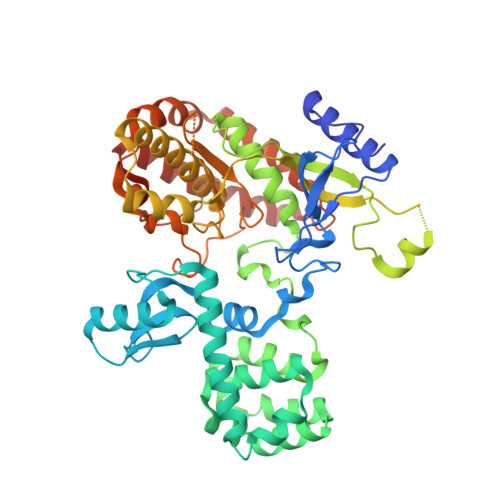Structure-based design and modular synthesis of novel PI4K class II inhibitors bearing a 4-aminoquinazoline scaffold.
Misehe, M., Klima, M., Matousova, M., Chalupska, D., Dejmek, M., Sala, M., Mertlikova-Kaiserova, H., Boura, E., Nencka, R.(2022) Bioorg Med Chem Lett 76: 129010-129010
- PubMed: 36184029
- DOI: https://doi.org/10.1016/j.bmcl.2022.129010
- Primary Citation of Related Structures:
8A5X - PubMed Abstract:
Novel 4-aminoquinazoline-6-carboxamide derivatives bearing differently substituted aryl or heteroaryl groups at position 7 in the core were rationally designed, synthesized and evaluated for biological activity in vitro as phosphatidylinositol 4-kinase IIα (PI4K2A) inhibitors. The straightforward approach described here enabled the sequential, modular synthesis and broad functionalization of the scaffold in a mere six steps. The SAR investigation reported here is based on detailed structural analysis of the conserved binding mode of ATP and other adenine derivatives to the catalytic site of type II PI4Ks, combined with extensive docking studies. Several compounds exhibited significant activity against PI4K2A. Moreover, we solved a crystal structure of PI4K2B in complex with one of our lead ligand candidates, which validated the ligand binding site and pose predicted by our docking-based ligand model. These discoveries suggest that our structure-based approach may be further developed and employed to synthesize new inhibitors with optimized potency and selectivity for this class of PI4Ks.
Organizational Affiliation:
Institute of Organic Chemistry and Biochemistry of the Czech Academy of Sciences, Flemingovo nam. 2, 166 10 Prague 6, Czech Republic; Department of Organic Chemistry, Faculty of Science, Charles University in Prague, Hlavova 2030/8, 128 43 Prague 2, Czech Republic.















